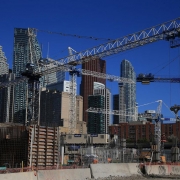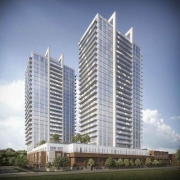As the COVID-19 curve continues to flatten across the country and more Canadians are returning to the housing market, a new report from Engel & Völkers reports a notable spike in demand for luxury real estate.
The Canadian Luxury Real Estate brand released its Mid-Year 2020 Report on Wednesday, which says demand for luxury properties is spiking across the country as the curve continues to flatten in Canada.
The market report provides an analysis of residential real estate through April, May, and June across five markets including Halifax, Montréal, Ottawa, Toronto, and Vancouver and it discusses luxury real estate across three price segments of under $1 million, $1-4 million and over $4 million as listed in the Multiple Listing Service (MLS).
On a national level, Canada’s major metropolitan areas have shown market resiliency following a significant pause during the COVID-19 pandemic.
The report says April was marked by “generational lows” and that home sale activity fell by a record 56% compared to an already affected March. Year-over-year, national sales dropped by 57.6% and the number of newly listed homes across Canada declined by 55% in April compared to March.
Despite these declines, prices held in most markets through the pandemic and national home sales rebounded in May by a record 56.9%, amounting to one-third of a return of the activity lost between February and April.
What’s more, the number of new listings across the country climbed by a record 69% in May compared to April. By June, home prices returned to pre-pandemic levels, as inventory increased, however, Engel & Völkers says this still wasn’t enough to meet pent-up buyer demand.
The luxury real estate brand noted it specifically saw a 30% year-over-year increase in closed sales volume and a 28% year-over-year increase in average sales price across Canada from January to June 2020.
On a local level, the report showed that sales of homes and townhomes accelerated in June, while the condo slowdown presented a temporary buying opportunity in Toronto’s downtown core.
In the lead up to the pandemic, Q1-2020 was busy in Toronto and resales were up 49% year-over-year during the first two weeks of March. However, as lockdowns began, home sales plummeted 16% in the latter half of the month.
May brought the first look of market recovery as Canada’s largest city saw housing activity resume with home sales increasing by 55.2% and new listings jumping by 47.5% compared to the previous month. At the close of the month, prices rose by 3% year-over-year, indicating the market was regaining traction and moving toward normalcy.
However, as June arrived, so did the pent-up buyer demand, specifically for detached and semi-detached homes. This, coupled with tight housing supply and growing consumer confidence post-COVID, effectively positioned Toronto as a seller’s market.
Residential home prices were up 11.9% year-over-year and average sales price was also up substantially by 7.8% month-over-month, signalling a revival in the higher price-point segment in the Greater Toronto Area (GTA).
“Despite a mid-Q2 pause, Toronto’s popularity among domestic and international migrants is keeping the market on firm ground,” reads the report.
Anthony Hitt, president & CEO, Engel & Völkers Americas, says Canadian markets are proving their resiliency and that demand in Halifax, Toronto, Vancouver, Montréal, and Ottawa held through the pandemic, with high-demand price points selling quickly with multiple offers.
“COVID-19 has caused Canadians to rethink how they want to live, causing a shift in buyer preferences and habits in real estate. This is reflected in rising demand for properties with flexible living spaces to meet both work and lifestyle needs and amenities such as pools, entertainment rooms and outdoor living spaces and entertainment spaces.”
Hitt added that he’s also starting to see a trend toward cottage country and the suburbs, which is creating a temporary buying opportunity within the urban condo market as people prioritize properties with more space.







 Maziar Moini, Broker of Record - Home Leader Realty Inc.
300 Richmond St. W., #300, Toronto, ON M5V-1X2
Maziar Moini, Broker of Record - Home Leader Realty Inc.
300 Richmond St. W., #300, Toronto, ON M5V-1X2



